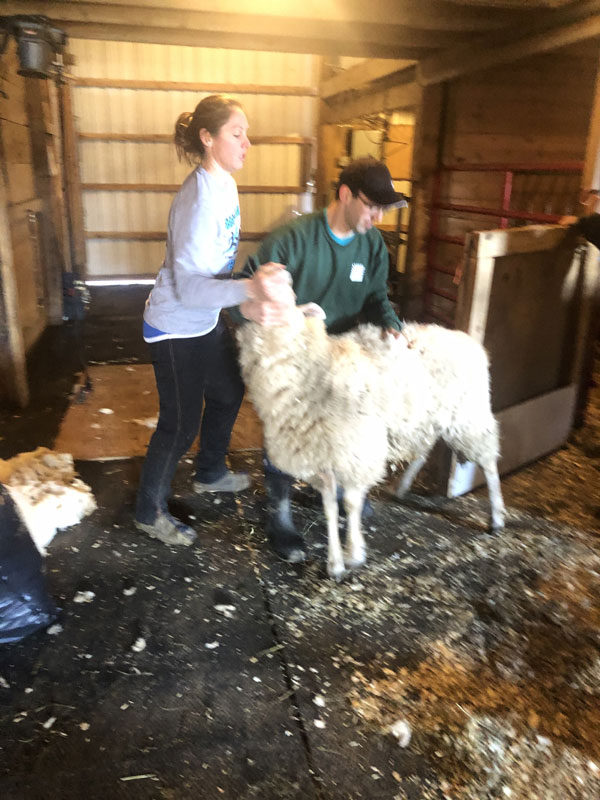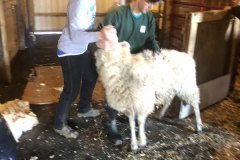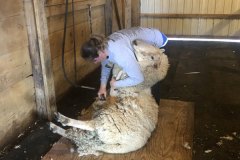Unlike dogs, most sheep do not have the ability to shed. If they are not shorn the fleece will continue to grow, becoming felted and heavy. This might generate potential health risks to the sheep, such as fly strike, which is very unpleasant for both the sheep and shepherd. The time of year and the number of times a year sheep are shorn are dependent on many factors, including, but not limited to, the producer’s purpose of production, fiber length needed for the targeted market, breed, geological location and timing of the markets’ demand.
At Beaver Lake Farm, our top priority is excellent animal husbandry and land management, with market sales only being considered secondarily. We plan events such as lambing and shearing around the sheep’s needs to optimize grazing effectiveness.
Therefore, we shear during the end of March and before the first of April. This falls a few weeks before lambing is due to start and results in the ewes being more comfortable in late gestation – losing 10 pounds while carrying twins is quite a relief! It also yields a much cleaner birth and makes it easier and cleaner for lambs to nurse. In addition, the ewes are more in tune with weather conditions when it comes to their newborns’ needs.
Shearing before lambing time also improves the value of the wool. Normally, the stress of lambing causes a small break in the wool fiber. If this break occurs at the end of the fiber and the ewe was shorn close to lambing, the break reduces the value of the wool. If the ewes are shorn after lambing, the break also poses challenges to the shearer along with making the fiber less useful.
Your next thought might be: won’t the sheep be cold that time of year? The answer is yes and no. Sheep are actually at a higher health risk when freshly shorn on hot summer days, believe it or not. They are more prone to heat stroke and damaging sun burn from losing their fleece in the Summer than having negative health effects from being a little chilly when shorn this time of year. Their internal furnace works much better than their air conditioner, and they will be provided with locations in the fields where they can escape the wind, access warm dry spots in the barn, and get a little extra feed to aid in keeping them comfortable in inclement weather.
I do not shear the sheep myself. Sheep shearing is a highly specialized skill that takes years of practice and is very physically challenging. We are lucky to have an excellent sheep shearer, Amy O’Donnell, who drives to the Farm to do the shearing. Thanks, Amy!
If you are interested in our fleeces, please contact us through Facebook/Instagram messages, email to info@beaverlakefarmny.com or call/text 845-747-0704.





